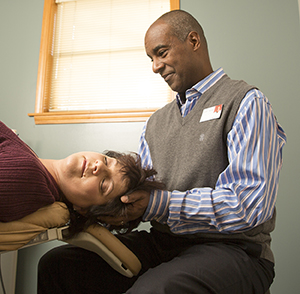Benign Paroxysmal Positional Vertigo
Benign paroxysmal positional vertigo (BPPV) is a problem with the inner ear. The inner ear contains the vestibular system. This system is what helps you keep your balance. BPPV causes a feeling of spinning. It'gs a common problem of the vestibular system.
Understanding the vestibular system
The vestibular system of the ear is made up of very tiny parts. They include the utricle, saccule, and semicircular canals. The utricle is a tiny organ that contains calcium crystals. In some people, the crystals can move into the semicircular canals. When this happens, the system no longer works as it should. This causes BPPV. Benign means it's not life threatening. Paroxysmal means it comes in sudden brief spells. Positional means that it is triggered by certain head movements or positions. Vertigo is a feeling of spinning.
What causes BPPV?
Causes include injury to your head or neck. Other problems with the vestibular system may cause BPPV. In many people, the cause of BPPV is not known.
Symptoms of BPPV
You may have repeated feelings of spinning (vertigo). The vertigo usually lasts less than 1 minute. Some movements, such as rolling over in bed, can bring on vertigo.
Diagnosing BPPV
Your primary healthcare provider may diagnose and treat your BPPV. In some cases, you may be referred to an ear, nose, and throat specialist (otolaryngologist) or a nervous system specialist (neurologist).
The healthcare provider will ask about your symptoms and your medical history. You will be examined and have hearing and balance tests performed. As part of the exam, your healthcare provider may have you move your head and body in certain ways. If you have BPPV, certain types of movements can bring on vertigo. Your provider will also look for abnormal movements of your eyes. You may have other tests to check your vestibular or nervous system.
Treatment for BPPV
By using certain maneuvers your healthcare provider will try to guide the calcium crystals back to the chambers where they should be. This is done by having you move your head and neck in certain ways. This treatment is safe and often works well. You may also be told to do these movements at home. You may still have vertigo for a few weeks. Your healthcare provider will recheck your symptoms, usually in about a month. Special physical therapy may also be part of treatment. In rare cases, surgery may be needed for BPPV that does not go away. Talk with your healthcare provider about whether it's safe for you to drive.
 |
| Your health care provider may move your head in certain ways to treat your BPPV. |
When to call the healthcare provider
Call your healthcare provider right away if you have any of these: